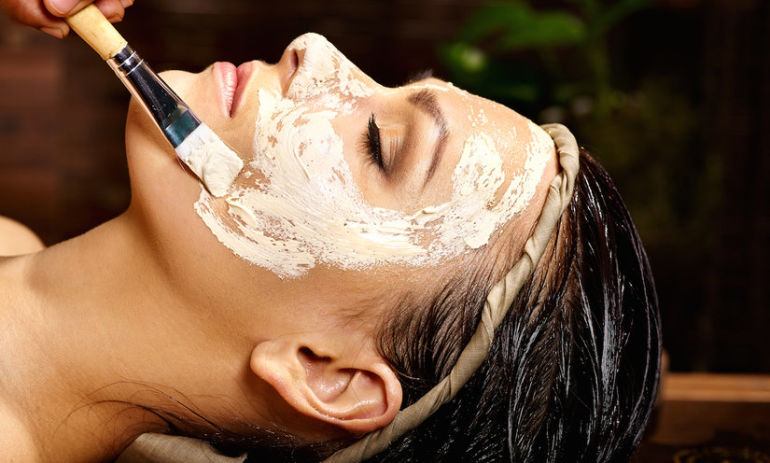An Ancient Ayurvedic Ritual For Your Best Skin Ever

To follow up on my piece introducing the Ayurvedic doshas and the best practices lifestyle practices for each, I'd now like to introduce you to an ancient Ayurvedic skin care practice.
Mukhalepam is an ancient process in which the facial skin is massaged and coated with oils and herbal pastes, tailored to individual skin types. Here are a few of its many benefits:
- Increases the elasticity of the skin to prevent wrinkles and enhance smoothness.
- Cleanses skin for a natural glow.
- Prevents pigmentation.
- Removes dead cells, and fades existing scars and blemishes.
When practicing Mukhalepam, apply pastes and oils gently against the direction of the hair. This ensures the active ingredients of the herbs will penetrate deep into the skin. Wash pastes off with cold water as soon as they dry — if they're kept on for too long, the skin may become excessively dry.
If you're Vata ...
This type of skin dries quickly and is especially vulnerable to shifts in weather. Vata skin must be protected from harsh heat and cold, as well as pampered to retain its natural oils and moisture. It's important to avoid hot water baths as they can dry your skin out. Be sure to use pH-balanced soaps and drink lots of water for hydration from the inside out.
Cleanse: Use a solution of rose water and milk, gently massaging it into the skin.
Exfoliate: Use rice or almond powder as an exfoliant to remove dead skin cells, which can diminish the skin’s natural glow. You may also want to steam your skin with mint leaves and plain water to open your pores and increase circulation.
Moisturize: Aloe vera gel or cream may also be used to gently massage the facial skin and add extra moisture. Antioxidant- and oil-rich avocado has a number of benefits for the skin, and is chock full of healthy fatty acids and vitamins as well. Mash up an avocado into a smooth paste and apply it evenly to the face for 15 minutes, then rinse with cold water. Apply a few drops of almond oil and massage into the skin to moisturize it.
If you're Pitta ...
This type of skin is very sensitive, and is easily burned by sun exposure. It needs to stay cool or else an imbalance can lead to rashes, acne and inflammation.
Cleanse: Begin by cleansing the skin with rose water.
Exfoliate: Use a combination of milk and sugar to gently scrub the dead skin cells off. You can follow this up by steaming the skin with Neem leaves and water.
Moisturize: Massage the face gently with a solution of sandalwood paste and virgin coconut oil. Follow this with a fresh paste of rose petals, red sandalwood, white sandalwood, aloe vera and Indian gooseberry, lightly applied in a single coat. Rinse off the mask with cold water as it begins to dry.
If you're Kapha ...
This type of skin is prone to oiliness because of its thick, smooth nature. Toxins accumulate under the skin and eventually force their way out, resulting in irritation and eruptions. For Kapha skin, it's crucial to detox — both externally and internally — regularly.
Cleanse: It's important to cleanse Kapha skin twice a day to get rid of excess oil that accumulates.
Exfoliate: Gently scrub the face with a mixture of sea salt and honey, then steam it with a combination of water and mint leaves.
Moisturize: Massage the face with a solution of aloe vera and turmeric paste, then apply a mask of yogurt mixed with ripe papaya, grated cucumber and tomatoes. Apply to skin and rinse off with cold water once dry. Repeat every other day for best results.
Skin care doesn’t stop with the face, either — massages and herbal baths are a great way to care for the rest of your skin. Try adding 10-12 drops of your favorite essential oil into a bath or infuse it with fresh herbs. Almond oil, avocado oil, sunflower oil, safflower oil, walnut oil and grapeseed oil can also be added to your bath for an extra dose of moisture.
Ayurvedic massage is also valuable for skin health, especially when you use oils that complement your dosha. Vata types benefit from sesame oil, while Pitta types would do well with sandalwood or sunflower oil. Calamus root oil or corn oil is ideal for the Kapha dosha. Remember to massage in the direction of your heart to boost your circulation and make skin glow!
Photo Credit: Shutterstock
Comments
Post a Comment